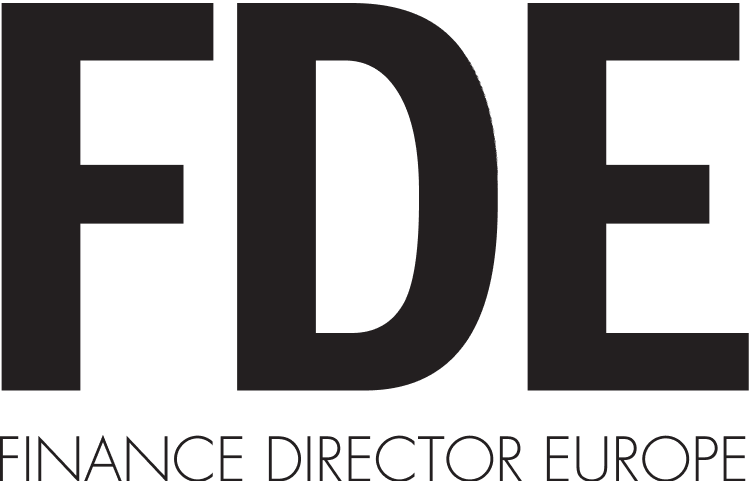
When Lena Shishkina and Alexandra Bjertnæs joined Meltwater as chief financial officer and chief strategy officer on the same day last year, the diversity mix of the C-suite jumped immediately. But that’s not the only way these two women plan to improve diversity, equity and inclusion (DEI) at the global SaaS provider. From refining KPIs to encouraging parenting Slack groups, their initiatives may still be works in progress, but all coalesce around a single idea: financial results are important, but they can’t come at the cost of your colleagues. In fact, a company can only be competitive if employees take care of each other, from upper management to the newest recruit.
Nor is Meltwater, which provides media intelligence and social analytics, by any means alone. If nothing else, this is clear from the statistics. In its North American CFO Signals survey for the second quarter of 2021, Deloitte found that 72% of CFOs noted their company had a formal DEI programme – an increase from 67% in the first quarter of 2019.
At the same time, the survey found that 60% of CFOs represented companies that either had, or planned to have, a defined budget for DEI over the next year, suggesting a growing recognition that diversity can play a part in creating long-term value for shareholders. A Wall Street Journal analysis found that the 20 most diverse companies in the S&P 500 have an annual stock return of 10% over five years, compared with the 4.2% achieved by their least diverse counterparts.
This makes sense. A strong DEI policy, with reduced biases in recruiting, hiring and development, means the best talent is less likely to be overlooked, improving results. A truly inclusive culture encourages that talent to stay at the company for longer, reducing recruitment costs. In an industry as dynamic as media intelligence, where companies are competing fiercely for talent, being an attractive employer is the only way to stay at the top of your game.

Before Shishkina and Bjertnæs accepted positions at Meltwater, its retention statistics already spoke to a strong and supportive culture. The average executive tenure is seven years, and CEO John Box is a 16-year veteran of the company. “The values are very clear, they have been very consistent and rooted in Norway and we still pronounce them in the regional language,” Shishkina says.
There are three key values: Fun (‘Moro’), Number One (‘Enere’) and Respect (‘Respekt’), which, when distilled into their Norwegian acronym, MER, mean ‘more’. “It’s about always going the extra mile, delivering more, being more of what you can be,” explains Bjertnæs.
“We’re very mindful of being a public company and creating value with the shareholders in terms of revenue growth and profitability,” she continues. “But also, if you ask anybody for help, they’ll always step in, they do it with a smile. It’s a combination [of] being number one but with respect for each other. You feel like you can drop your shoulders and achieve things together without competing against each other. That culture is the glue that brings us all together on a good day or tough day.”
The right impact
Deloitte’s CFO Signals survey for Q2 2021, which drew 138 responses, asked finance chiefs to name “the one thing you plan to do to make the greatest impact on advancing DEI”. Their responses centered on reducing biases in recruiting, hiring, and development practices, including diversifying their teams and modelling inclusive leadership. Another high-ranking response was setting DEI-related goals and metrics.

These findings chime with Meltwater’s approach. At present, Shishkina is focused on assessing the current talent within the company and looking at the diversity of the talent mix. She is in the process of hiring a team from the Netherlands that will be in charge of transactional accounting, which is set to be the company’s most diverse yet. But this is just one strand of a much wider DEI strategy, led by Bjertnæs, who was recently appointed as the global sponsor for all Meltwater DEI initiatives.
“Commitment to DEI needs to come from the top, and should not be seen as a solely HR initiative,” Bjertnæs stresses. “Moreover, our DEI initiatives need to be sustained, consistent, measurable and backed by investment. It’s not a quick fix and we don’t see it that way.”
Meltwater has had a DEI strategy in place for the last two years, but Bjertnæs says the company is now at the point of honing its structure. She has a cross-functional team with HR, comms and other departments involved, as well as an external advisor who brings an objective point of view to how Meltwater is doing. That’s shadowed by scaling already existing programmes and pinpointing where impact can be made most effectively, a process which involves detailed goal setting and defining realistic and measurable KPIs.

Some of the DEI measurements that Meltwater tracks include the obvious, such as the percentage of employees and leadership that are women. But less common metrics are being used too – including the number of languages each employee speaks. “We’re geographically spread across five continents, and we have 50 offices,” Bjertnæs says. “Are we respecting that part of our culture? And do we measure it as part of our cultural diversity?”
Meltwater’s DEI team will also start measuring its diversity tunnel in terms of gender and race – from the board right down to the recent recruits. That’s echoed by considering KPIs around DEI education: who is taking the courses on offer, and what percentage of employees are actually completing them?
“One thing we work a lot with is building trust and understanding, so we get the right numbers into our KPIs,” Bjertnæs says. “Everybody has to feel that this is a safe environment to share, a safe environment to build, and that we’re measuring the right things.”
Setting a benchmark
These kinds of measurements allow Meltwater to demonstrate not only to employees but also to the wider industry what progress they are making on the DEI front – and its impact on financial performance.
“It’s crucial for us as a listed company that we communicate our goals and KPIs externally to partners, investors and stakeholders, and share our DEI metrics,” Shishkina explains. “The industry competes for talent so we want to be top of the ranks for being an attractive employer. We also aspire to become the benchmark in the industry, inspiring other companies, but it’s a work in progress. Both internally and externally, Meltwater has always been a very transparent company about our successes but also some of the areas we need to improve.”
For her part, Bjertnæs argues that transparency is an effective way to demonstrate credibility and integrity. “Measuring means continuous improvement. We measure and measure again and see the progress. It creates energy and momentum and gives us the ability to be best in class because we’re concrete about what we do. What you measure you manage, and what you manage you measure.”
For the rest of 2022, Shishkina and Bjertnæs plan to prioritise getting their KPIs in place, and move ahead strongly on their recruitment goals. From there, they aim to move from employees to suppliers. “Our first priority was our employees,” Bjertnæs stresses. “Our procurement function will be the next to shape up.”
Beyond the charts
It seems clear, in short, that Meltwater is taking DEI seriously. Even so, not every aspect of a DEI programme can be measured empirically – even if less tangible activities are just as important as the ones that fit neatly on a graph. “To inspire and elevate female talent, and show them the way to leadership roles, we need to be asking the basic questions like: how do you manage childcare?” Bjertnæs stresses. “Everyone needs to be able to speak on that level with a female leader.”

Seemingly simple additions to day-to-day life at Meltwater – like a Slack channel for parents – are typical. “People post pictures of their kids, watch out for each other and check in,” Bjertnæs says. “I’m in here as well. I love it. One of the guys had a baby and we got him a body suit with the Meltwater logo on the front and a ‘to the moon’ rocket on the back. That one was popular. Our CEO is also in the group, so that’s a clear sign of support from the top.”
More broadly, the executives argue it’s important to acknowledge the mental health challenges that rear their heads during many journeys to leadership positions. “We had one female leader who had been exceptionally successful for many years, but was going through a difficult time,” Shishkina recalls. “We got together to figure out how to help and support her because she hadn’t experienced this before. It was about helping her recognise it was OK.”
This combination of transparent, measurable targets for education, hiring and leadership accountability – and a culture that treats employees as humans who face problems at work – serves to strengthen what Bjertnæs calls the ‘DEI building blocks’ which hold up the rest of the organisation.
“A company has a vision: where they’re going,” she summaries. “Then it has a mission about how to get there: their goals and strategies. But what holds this up are the values, the culture and the people. And we know that diversity, equity and inclusion are the building blocks, holding the whole thing up. For me, that’s the foundation of everything we do. If you know what your vision is and you have your culture, your people and the right values with you, you’ll get there.”
10%
The annual stock return over five years of the 20 most diverse companies in the S&P 500, compared with the 4.2% achieved by their least diverse counterparts.
Wall Street Journal
1/3
Companies with more than this proportion of women executives were more likely to outperform companies where the percentage ranged from 10–30%.
McKinsey






